When an incident occurs in the workplace, having a clear and concise report is essential for effective communication and resolution. It's important to document not only the details of what happened but also the context and potential impact on the team. This helps create a safer environment in the future and ensures that all team members are informed. So, let's dive into how to craft an effective workplace incident report that covers all the necessary bases!
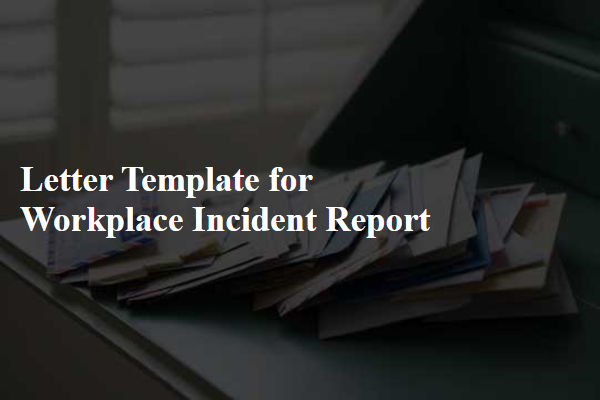
Incident Details
In a workplace incident report, detailed documentation is crucial for understanding the event's circumstances. On January 15, 2023, at approximately 2:30 PM, a slip and fall incident occurred in the break room of the Corporate Office located at 123 Business Lane, Springfield. An employee, Jane Doe, aged 34, lost her footing on a wet floor due to a spilled beverage that had not been cleaned up. The floor surface in the break room, known for its tile finish, became dangerously slick, which exacerbated the situation. Jane sustained a minor injury, described as a sprained wrist, and was assisted by her colleagues before being evaluated by the onsite medical personnel. Documentation of the spill's timing and previous maintenance checks will be essential for identifying preventive measures to avoid similar incidents in the future.
Employee Information
In a workplace incident report, the Employee Information section includes vital details about the involved employee, such as their full name, job title, and department, which is essential for identifying roles within the organization. The employee's identification number, if applicable, offers a unique reference for records management and tracking purposes. The incident's date and time (including both AM or PM) establish a precise timeline, which is crucial for investigation clarity. The location of the incident, whether it's a specific office, warehouse, or outdoor site, provides context for safety assessments and potential hazardous conditions. Finally, a brief description of the employee's role and responsibilities underscores their relevance to the incident, allowing for a better understanding of operational dynamics and factors contributing to the event.
Witness Statements
Accurate witness statements are crucial in workplace incident reports as they provide firsthand accounts of events. The witness, often a colleague or an employee present during the incident, should include specific details such as the time of the incident (for example, 3:15 PM on October 12, 2023), the location (e.g., the production area of the ABC Manufacturing Plant in Seattle), and the sequence of events leading up to the incident. Witnesses should describe the individuals involved, such as John Doe, a machine operator, and the type of machinery engaged, like a CNC milling machine, which malfunctioned. Clear descriptions of the environment, including surrounding activities and conditions, contribute valuable context. The statement should remain objective, providing a description rather than opinions, ensuring reliability during the investigation process.
Actions Taken
Documenting workplace incidents requires thorough detailing of the actions taken in response to the situation. Immediate measures typically include notifying a supervisor or manager about the incident, ensuring the safety of all employees involved, and administering first aid if necessary. If the incident involves equipment malfunction, such as a faulty machine in a manufacturing plant, steps may include shutting down the machinery, securing the area to prevent further accidents, and conducting a preliminary investigation to gather information about the event. Following this, a formal report may be completed, detailing the sequence of events, the individuals involved, and the timeline of actions taken. Communication with relevant safety authorities, such as the Occupational Safety and Health Administration (OSHA), may also be initiated to comply with regulatory requirements. Additionally, a review of safety protocols and training may be implemented to prevent future occurrences, creating a safer workplace environment.
Recommendations and Preventive Measures
In workplace environments, effective recommendations and preventive measures are crucial for enhancing safety protocols following incidents. Implement regular safety training sessions focused on hazard recognition, emphasizing the importance of personal protective equipment (PPE) such as helmets, gloves, and eye protection. Establish a thorough inspection routine for machinery, specifically targeting equipment over 10 years old that could pose risks. Conduct incident analysis meetings monthly to review trends and gather employee feedback, ensuring that at least 80% of personnel participate. Implement comprehensive reporting systems for near-misses to cultivate a proactive safety culture. Collaborate with safety officers to streamline emergency response drills, ensuring all staff are familiar with procedures for fire, chemical spills, and medical emergencies. Finally, evaluate the effectiveness of these measures biannually to adapt and optimize safety strategies continually.

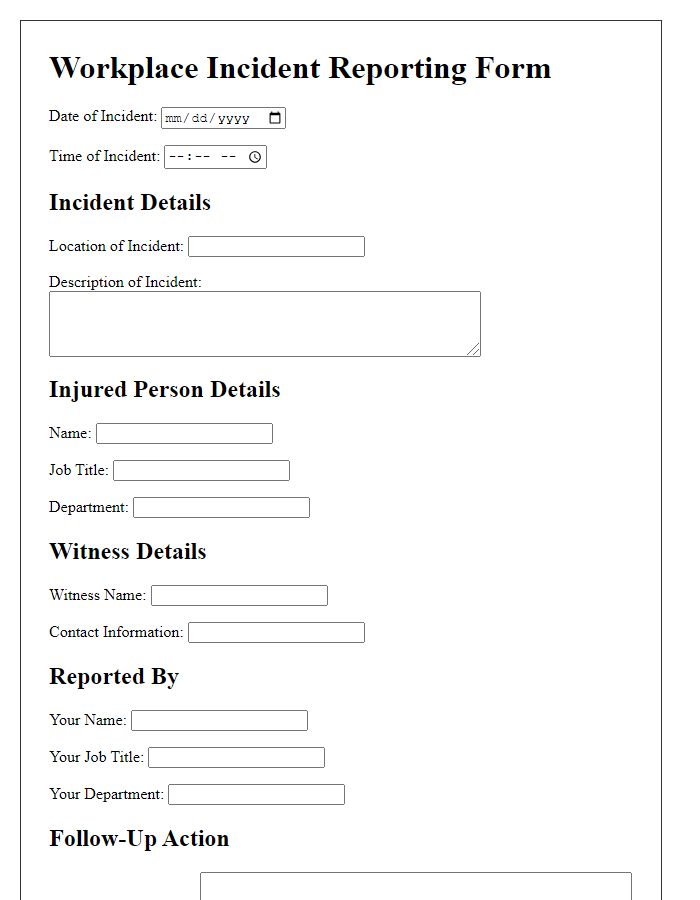
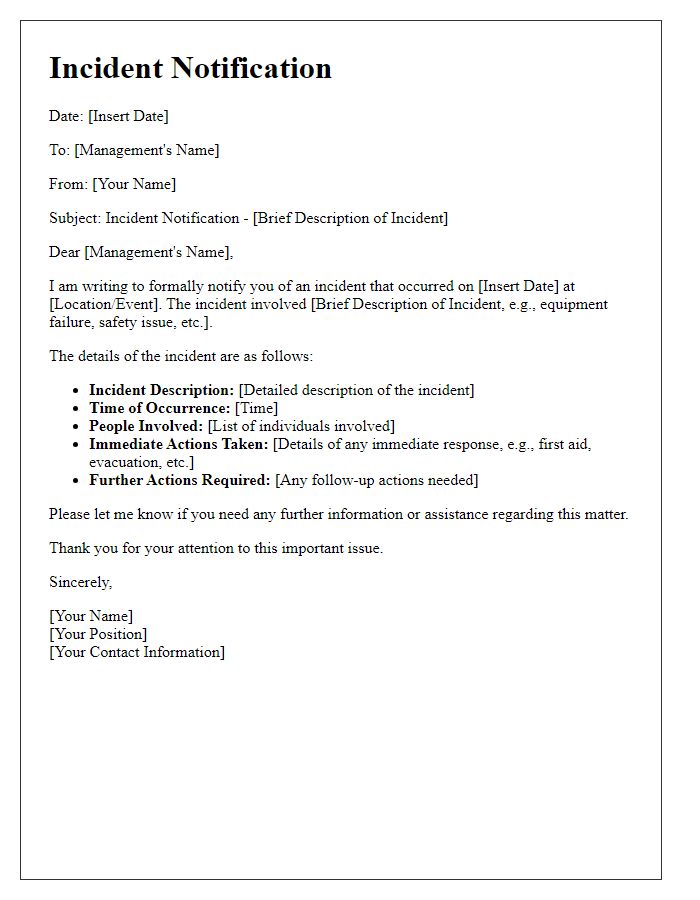
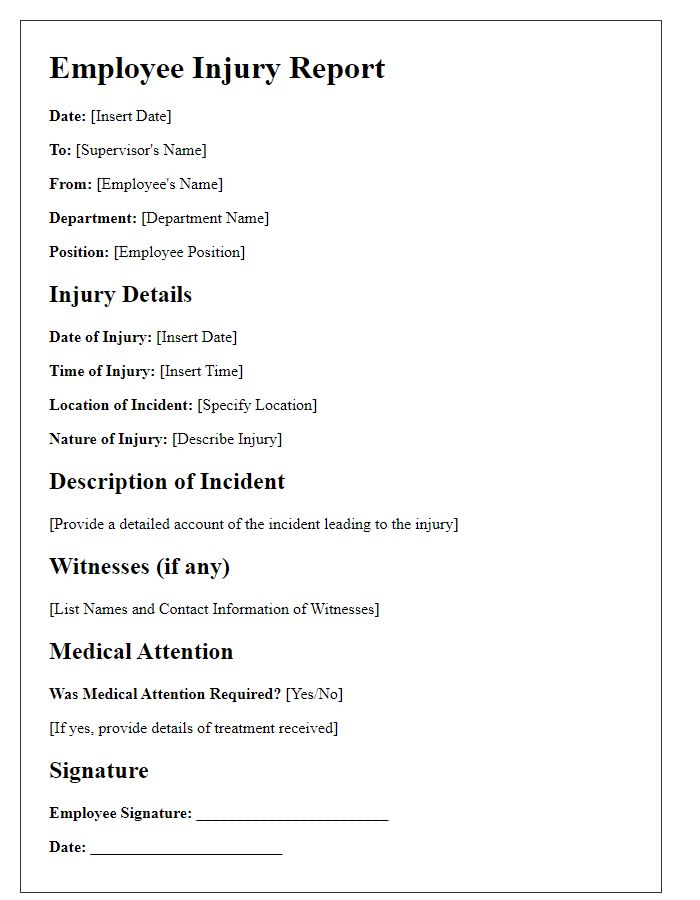
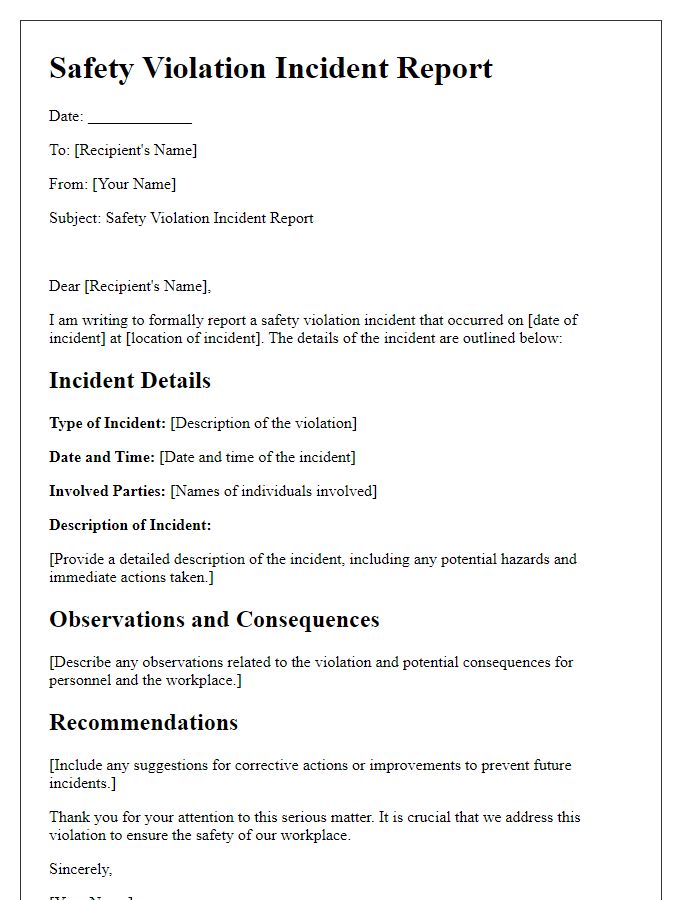
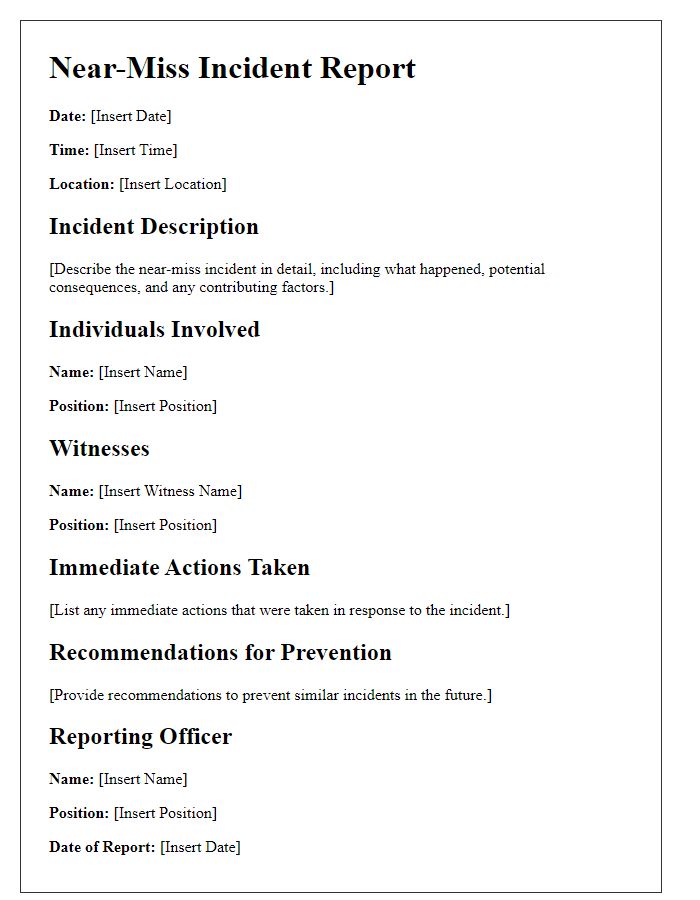
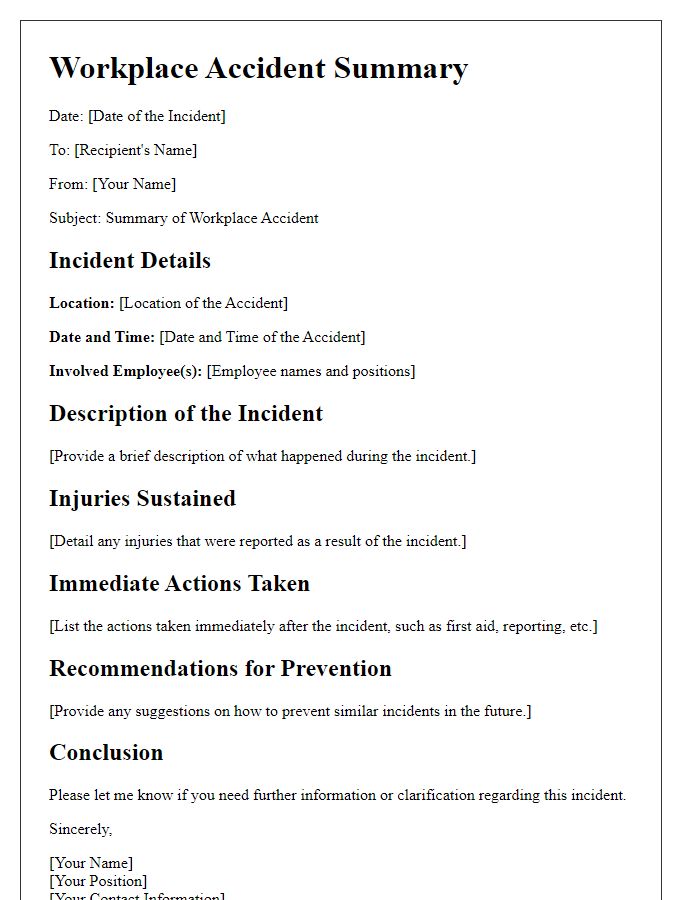
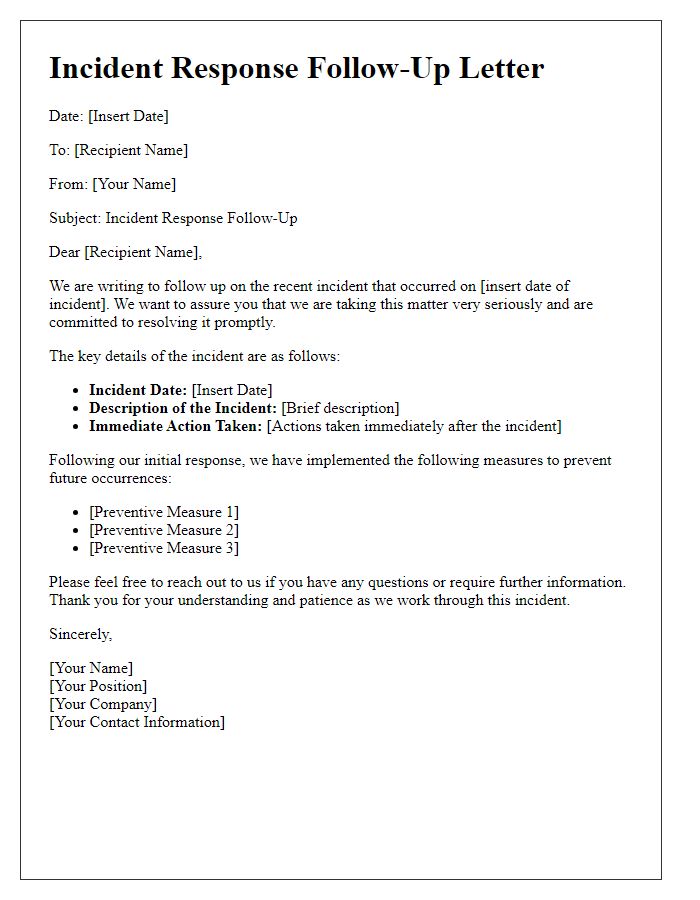
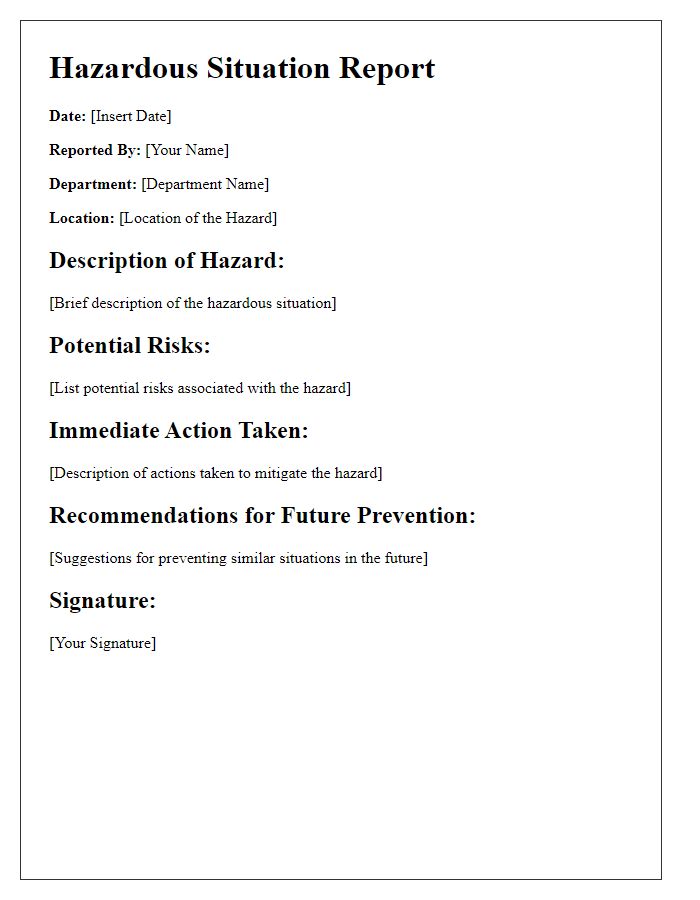
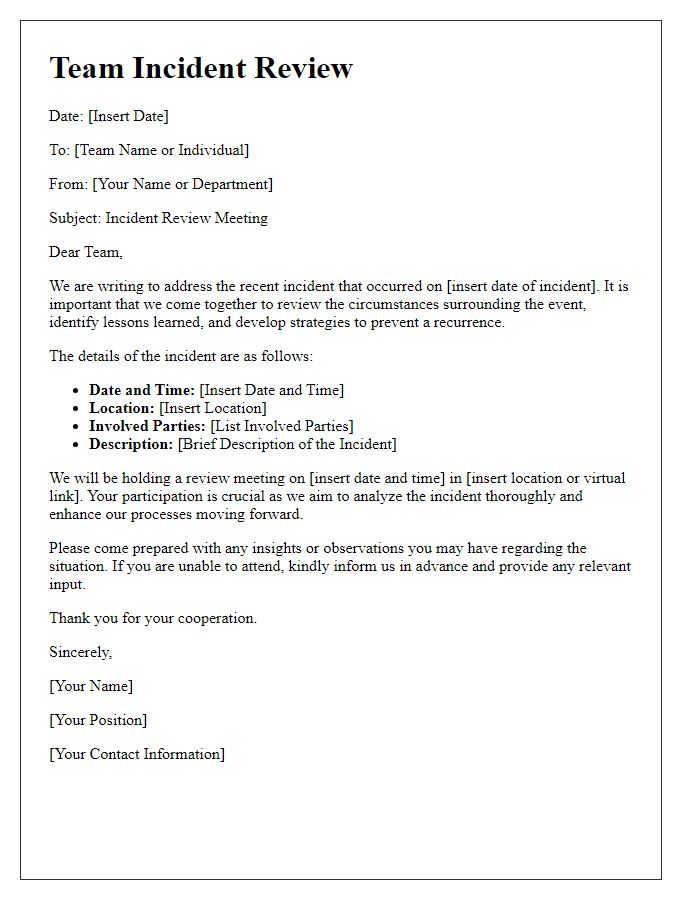
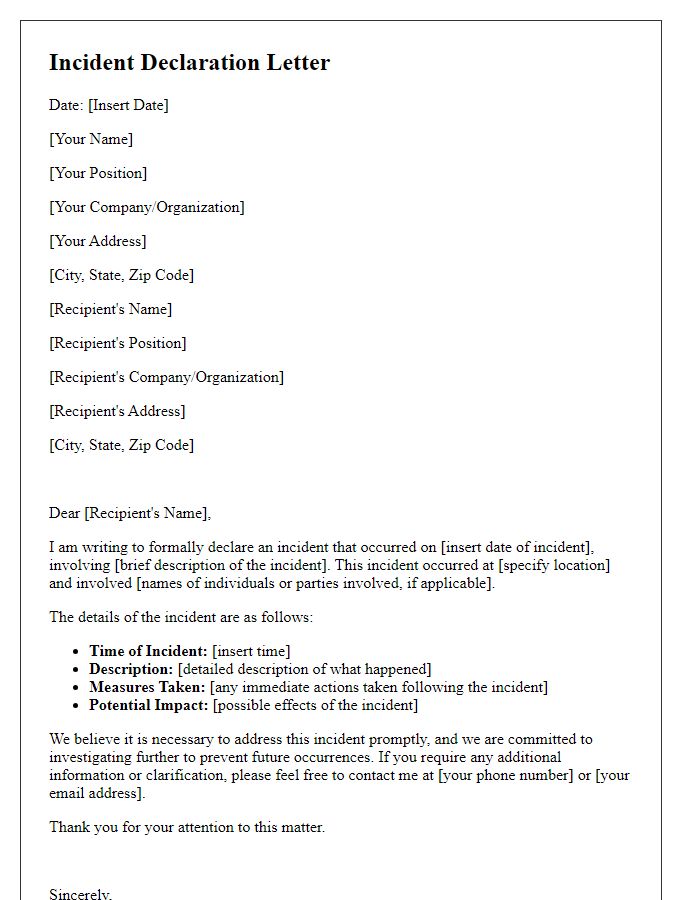


Comments